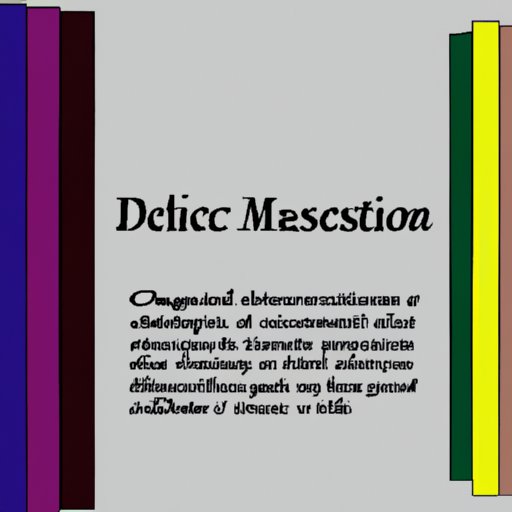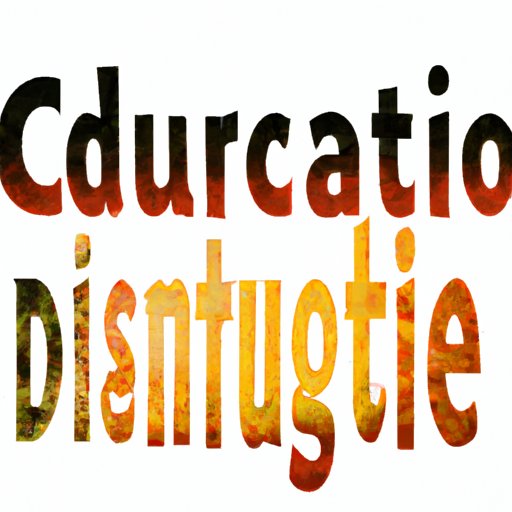Introduction
Cultural diffusion is a process by which cultural beliefs, practices, and traditions are spread from one group to another. It has been a part of human history since ancient times and continues to shape our world today. In this article, we will explore the history of cultural diffusion, examine its potential benefits and challenges, and discuss how it impacts society.

Exploring the History of Cultural Diffusion
Cultural diffusion can be traced back to the earliest days of human civilization. As humans migrated and interacted with different cultures, they began to adopt new beliefs, practices, and traditions. Over time, these elements would become part of the local culture, resulting in a mix of different elements from different places.
In more recent years, cultural diffusion has accelerated due to advancements in transportation and communication technology. This has allowed for a much faster exchange of ideas between different cultures, leading to a greater blending of cultures than ever before.

Examining the Benefits of Cultural Diffusion
One of the primary benefits of cultural diffusion is an increased understanding and acceptance of different cultures. By exposing ourselves to different beliefs and practices, we can come to better appreciate the complexities and nuances of other cultures, leading to a greater understanding of our differences and similarities.
Another benefit of cultural diffusion is improved business and trade relationships. As different cultures become more familiar with each other, they may be more likely to engage in trade, leading to economic growth and development.
Analyzing the Challenges of Cultural Diffusion
While there are many potential benefits of cultural diffusion, there are also some potential challenges. One of the primary challenges is the preservation of local cultures. As different cultures interact and blend, there is a risk that some elements of local cultures could be lost or diluted.
Another challenge posed by cultural diffusion is the potential for conflict between differing values. Different cultures may have different views on certain issues, such as religion or gender roles, which could lead to tension or even violence if not addressed properly.
Conclusion
Cultural diffusion is the spread of cultural beliefs, practices, and traditions from one group to another. It has been a part of human history since ancient times and continues to shape our world today. By exploring its history, examining its potential benefits and challenges, and discussing its impact on society, we can gain a better understanding of cultural diffusion.
Cultural diffusion can lead to increased understanding and acceptance of different cultures, improved business and trade relationships, and a greater appreciation of the complexities and nuances of different cultures. However, it can also pose challenges, such as the preservation of local cultures and the potential for conflict between differing values.
Overall, cultural diffusion is an important part of our world and can have both positive and negative impacts on society. It is therefore important to be aware of its implications and strive to ensure that its benefits outweigh its challenges.
(Note: Is this article not meeting your expectations? Do you have knowledge or insights to share? Unlock new opportunities and expand your reach by joining our authors team. Click Registration to join us and share your expertise with our readers.)
